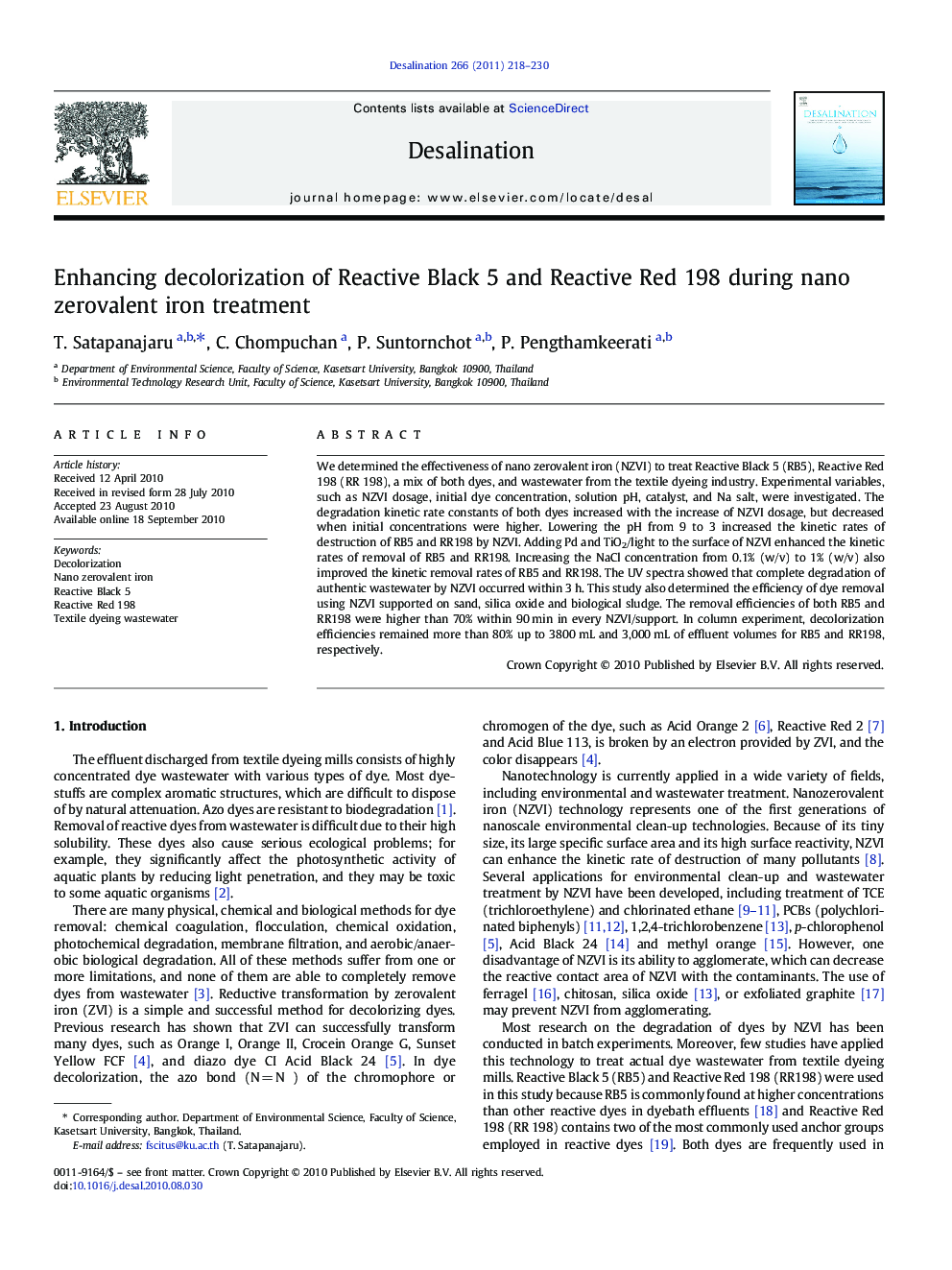| Article ID | Journal | Published Year | Pages | File Type |
|---|---|---|---|---|
| 625628 | Desalination | 2011 | 13 Pages |
We determined the effectiveness of nano zerovalent iron (NZVI) to treat Reactive Black 5 (RB5), Reactive Red 198 (RR 198), a mix of both dyes, and wastewater from the textile dyeing industry. Experimental variables, such as NZVI dosage, initial dye concentration, solution pH, catalyst, and Na salt, were investigated. The degradation kinetic rate constants of both dyes increased with the increase of NZVI dosage, but decreased when initial concentrations were higher. Lowering the pH from 9 to 3 increased the kinetic rates of destruction of RB5 and RR198 by NZVI. Adding Pd and TiO2/light to the surface of NZVI enhanced the kinetic rates of removal of RB5 and RR198. Increasing the NaCl concentration from 0.1% (w/v) to 1% (w/v) also improved the kinetic removal rates of RB5 and RR198. The UV spectra showed that complete degradation of authentic wastewater by NZVI occurred within 3 h. This study also determined the efficiency of dye removal using NZVI supported on sand, silica oxide and biological sludge. The removal efficiencies of both RB5 and RR198 were higher than 70% within 90 min in every NZVI/support. In column experiment, decolorization efficiencies remained more than 80% up to 3800 mL and 3,000 mL of effluent volumes for RB5 and RR198, respectively.
Research Highlights►Nano zerovalent iron (NZVI ) can be successfully used to decolorize RB5, RR198. ►The kobs were improved by increasing dosage, decreasing pH, adding Pd and TiO2/uv. ►The removal efficiencies of both dyes by NZVI/supporters were higher than 70%.
